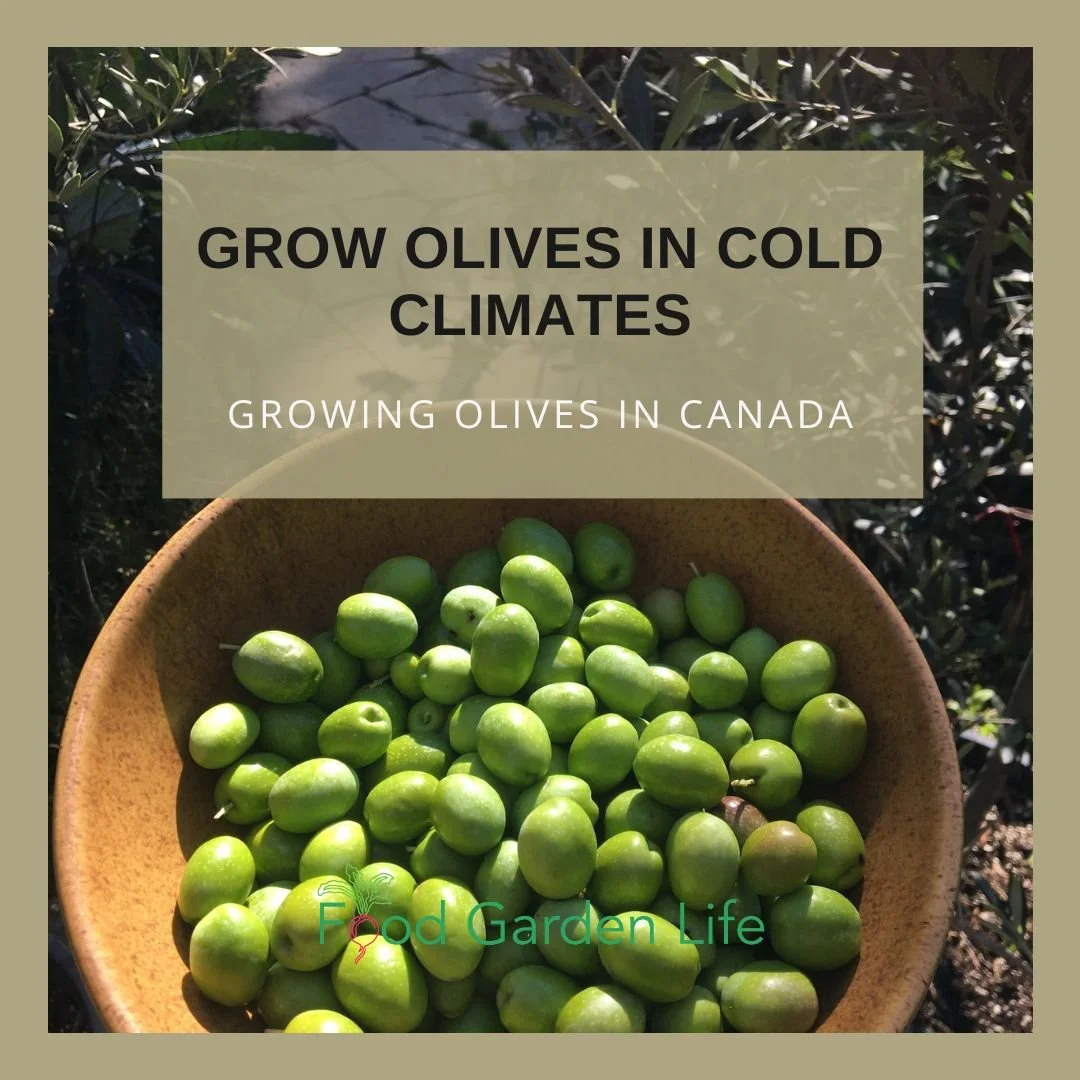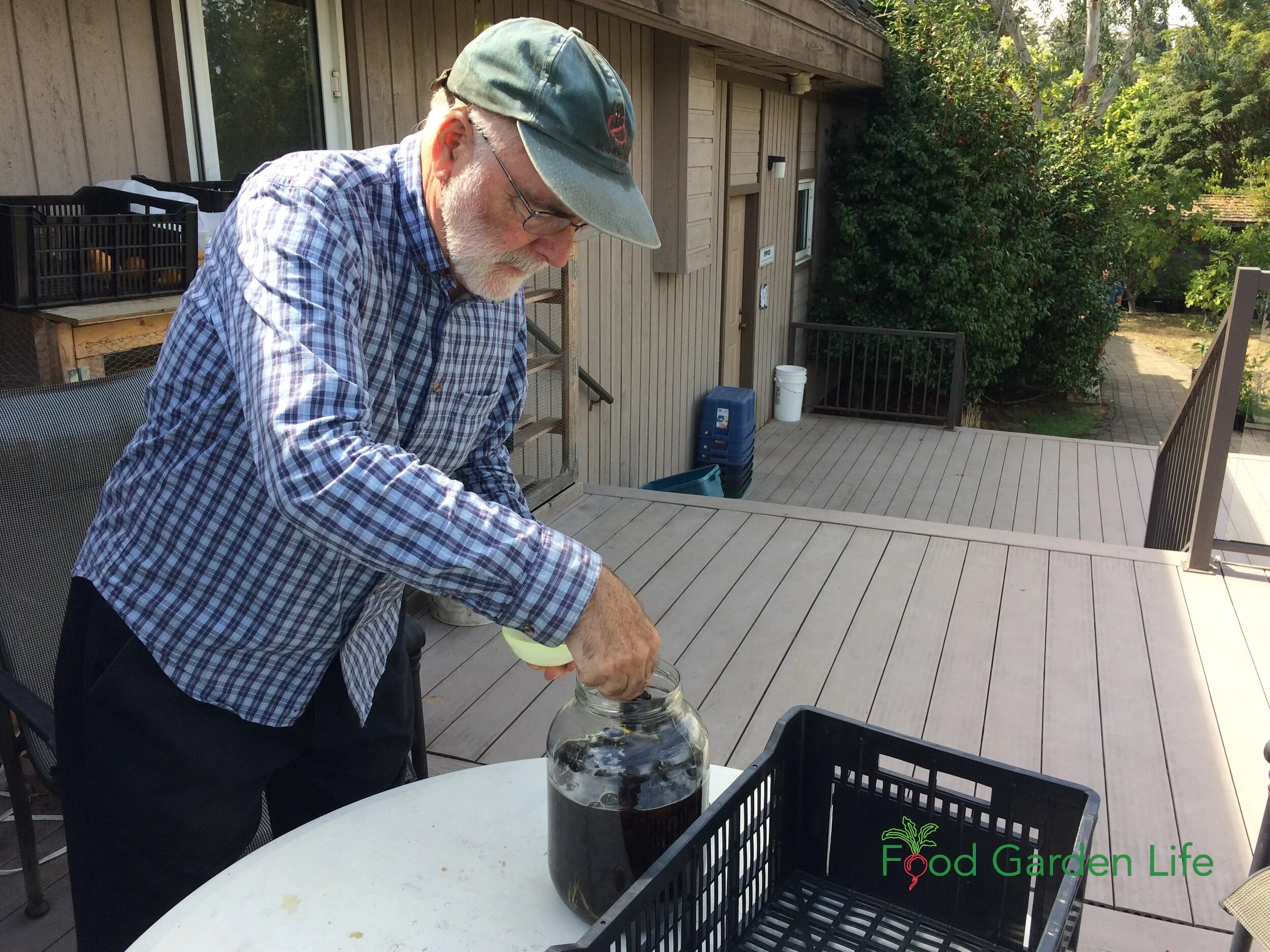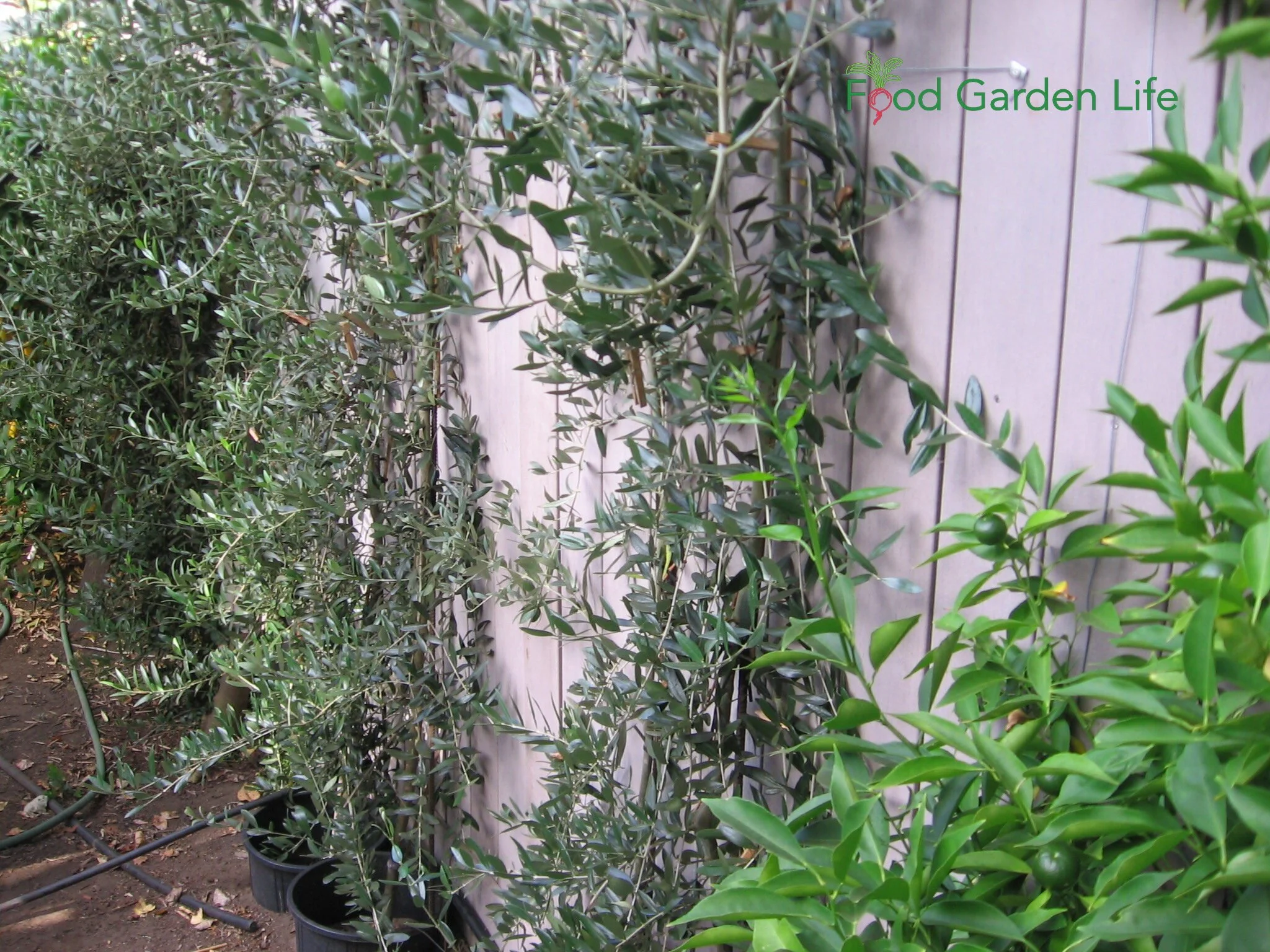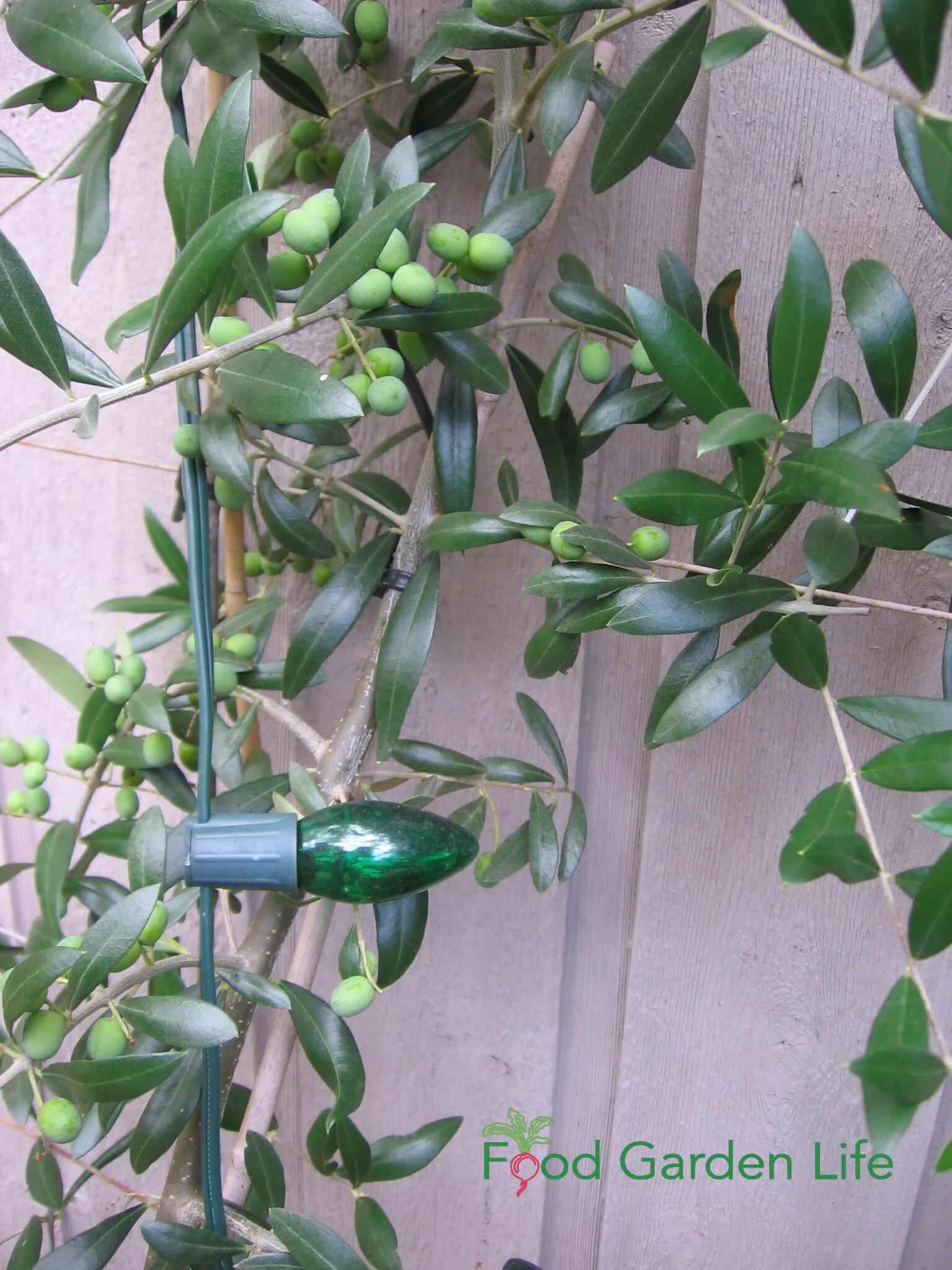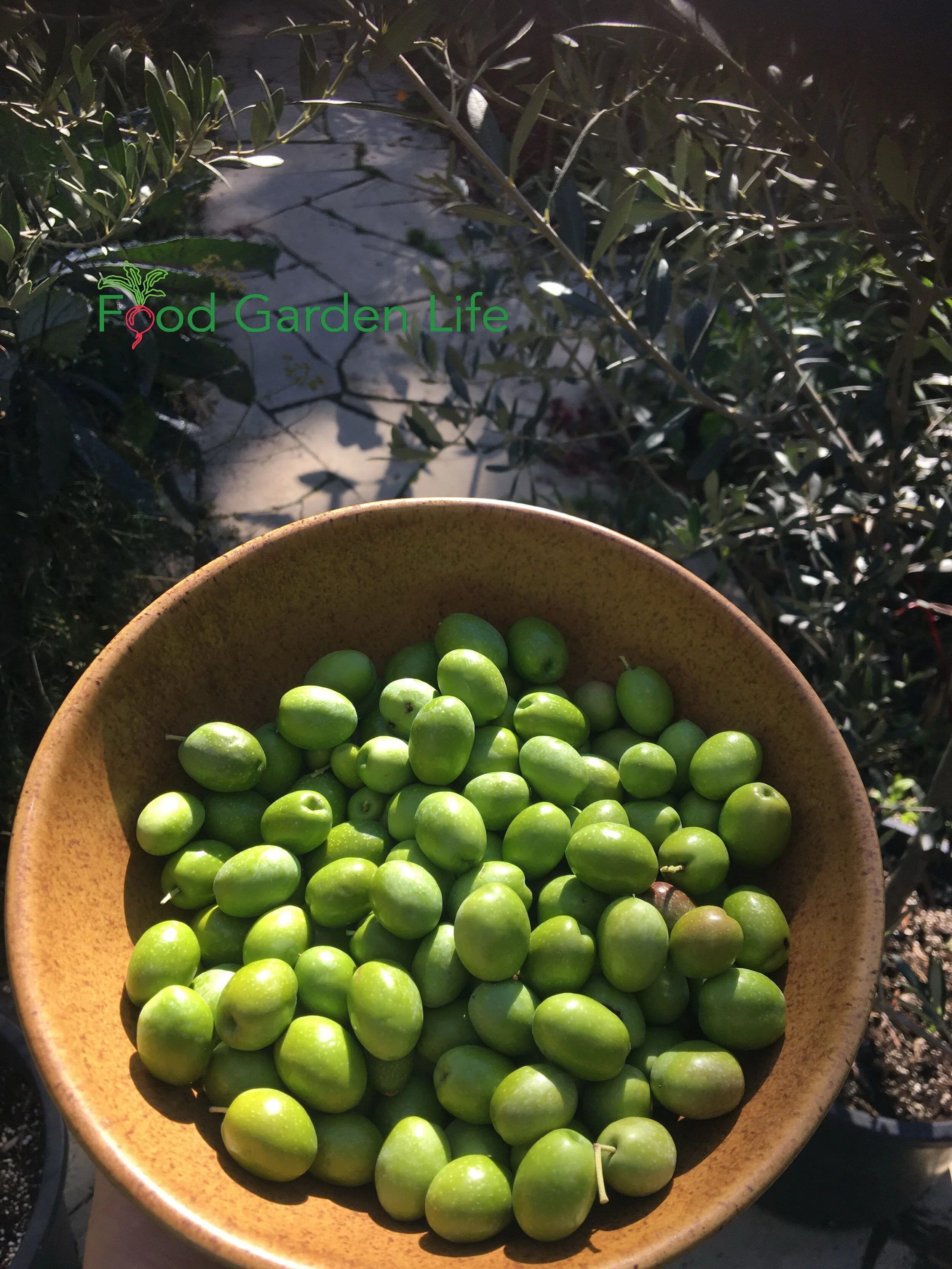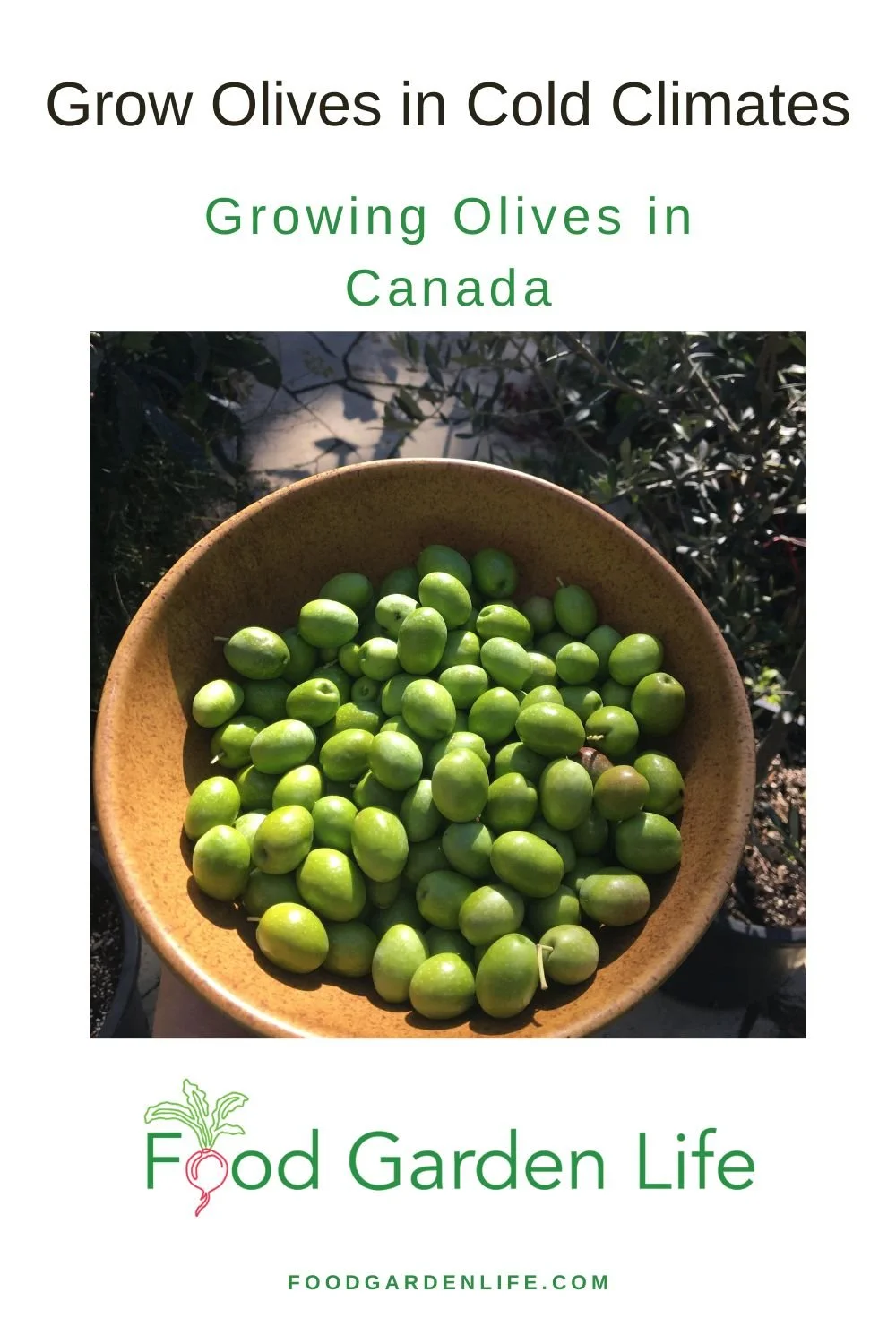Think You Can't Grow an Olive Tree in a Cold Climate? These Canadians Grow Olive Trees
By Steven Biggs
Be Creative and You Can Grow this Mediterranean Staple
An olive tree won't survive winter temperatures in most parts of Canada…but there are creative ways to grow one.
As Bob Duncan points to the olive trees on the south and west walls of his house he tells me, “Don't waste the walls on rose bushes!”
Duncan is near Victoria, British Columbia. And amongst the olive branches against his south and west walls I see a heavy crop of olive fruit.
While olive trees (Olea europaea) don't survive winter temperatures in most parts of Canada, in the balmier parts of British Columbia they do.
“The trees are absolutely fine at -10°C,” says Duncan, owner of Fruit Trees and More nursery.“
Last year, that one was thick with olives. Thousands of them,” he says, pointing to a 10-year-old olive tree.
It's not surprising that olive trees do well here, says Duncan. He explains that they are planted extensively in Mediterranean countries, where winters are similarly cooler than summers.
Growing Olive Trees in Southern B.C.
Planting an Olive Tree Where There's Protection
Bob Duncan, serving me home-grown table olives. This olive variety is from Italy.
Duncan grows olive trees flat against his house on a series of horizontal wires. If temperatures drop below -10°C (14°F), he drapes the outward-facing side of the olive trees with a floating row cover (a breathable, lightweight, cloth-like material).
He also has another trick to protect the olive trees during cold spells: Old-fashioned incandescent Christmas lights. When temperatures get low enough, he turns on the lights, which emit just enough heat to keep the temperature in a safe zone.
Olive Trees Elsewhere in B.C.
Conditions Similar to the Mediterranean
Michael Pierce grows olive trees in the ground, out in the open, at his home on Saturna Island, B.C. His nursery, Saturna Olive Consortium, specializes in olive trees.
He says that while the climate on some of the southern Gulf Islands and around Victoria makes it possible to grow an in-ground olive tree, it's borderline.
“They grow more slowly because the growing season is shorter and the conditions are cooler,” he explains.
Duncan tells local gardeners not to waste the south- and west-facing walls on their property on roses…save them for an olive tree!
Growing an Olive Tree in Colder Canadian Climates
Grow Your Olive Tree in a Container
If temperatures drop low enough, Bob Duncan turns on the incandescent Christmas lights on his olive plants as a source of heat.
My own potted olive trees in Toronto survive winter in a cool sunroom or an insulated garage. They’ve even spent the season in our dining room, though that’s not ideal.
A friend overwinters her olive tree by the south window in the house.
Find out more about how to grow an olive tree in a pot.
While an olive tree can make an attractive indoor plant, Duncan and Pierce both point out that without a cool spell, the flowering cycle of the olive tree can be disrupted. So if you overwinter it at room temperature, you might not get flowers. No flowers means no olive fruit.
Don Moffat, who works as an ornamental gardener in Toronto, has helped clients overwinter olive trees. A smaller olive tree, he says, can be buried in the ground to protect it from the cold.
Duncan notes that while an in-ground olive tree easily withstands -10°C (14°F), a potted olive tree should be exposed to no more than a light freeze. “The roots are not as tough as the upstairs,” he says.
Getting an Olive Tree to Flower and Fruit in Canada
An Olive Tree in a Container Needs a Cold Spell!
My Toronto olive harvest! I harvest them as green olives.
My original two olive trees—clones from the same plant—looked great but didn't give me olives for years. Duncan told me that they likely needed a cold spell. So I tweaked my overwintering technique to give them cold, bright conditions over the winter in a minimally heated greenhouse. They only get partial sun over the winter; that's fine.
Duncan also explained that because my plants are both the same variety, and because an olive tree is not always self-fertile, I should get another variety so they can cross-pollinate.
While Duncan has seen plants in isolation produce some olives, “It's better to have two varieties,” he says.
So I got a third olive tree—another variety. And between having two varieties, and providing a cold, bright spell over winter, my olives began to flower and set fruit.
Olive Tree Pollination
Want to Help Your Olive Tree?
“There is pollen everywhere,” says Duncan, as he talks about when the trees bloom.
Olive trees are wind-pollinated. But he helps to pollinate his olive trees, using a feather duster, or a vacuum set on reverse to blow.
I don't use a feather duster or vacuum for my potted olive trees. But I do keep the pots fairly close together when the trees bloom.
Olive Harvest
Even if you live somewhere too cold for olive trees to survive the winter, you can enjoy the exotic touch of an olive tree in your garden. This book gives you what you need to know to grow an olive tree in a pot. (And get olives!) Buy at Amazon.ca and Amazon.com.
Pierce usually harvests olives in November. Harvest time depends on the growing season, the variety, and stage of ripeness.
Olives can be picked before the fruit is ripe, while still green. That where green olives come from.
But green olives eventually ripen to another colour, and they can also be picked as they start to change colour, or when fully coloured.
Maintaining an Olive Tree
An olive tree will do best in full sun. When grown in a pot, make sure there are drainage holes. Use a well-draining potting soil and feed with a balanced fertilizer in spring and summer. Keep your potted olive tree well watered, but you don't want the soil to be constantly wet: Duncan advises that they be kept on the “dry side of moist.”
Only have partial sun? Conditions are rarely perfect in a home garden. Worth a try. And if your olive tree is growing in a container, you can move it around to give it as much sunlight as possible.
A young olive tree might need support until its stem thickens. Pruning is usually done in the spring. Prune to obtain the desired size and shape, removing crossing branches. Olives grow into small trees. Duncan's reach up to the eaves of his house.
But the gardener decides when the olive tree has reached its final size. My own olive trees are in 14” pots; I prune the plants to six feet in height so they are easily carried through a doorway.
An olive tree grown from cuttings (as are most commercially available plants) is “physiologically” mature and will fruit while still small. Pierce says, “I've seen a little, twelve-inch olive tree start to flower and get fruit.”
Pin this post about How to Grow an Olive Tree!
Olive Tree Varieties
Choose an Olive Tree for Hardiness and the Type of Olives
There are many olive varieties, and some are more tolerant of cold than others, says Duncan. Pierce finds the cultivars Frantoio and Leccino have good cold hardiness. These varieties are both from Italy.
But for gardeners growing olives in pots and providing a protected spot for the winter, this cold hardiness is not as important as it is for people growing an olive tree in the ground in southern BC.
My original two olive trees are an unnamed variety with olives that are large, plump, and green when I pick them here in Toronto in October. My third olive tree, which came home in the suitcase from Bob Duncan's nursery, is a Frantoio, and it's smaller fruits are just starting to colour up as I pick from my olive trees before stowing them away for the winter.
There are some varieties grown mainly as table olives. Other are for the olive oil. Some are for both olive oil and fruit.
More on Growing an Olive Tree in Cold Climates
Find out how to grow an olive tree in a pot.
Find This Helpful?
Enjoy not being bombarded by annoying ads?
Appreciate the absence of junky affiliate links for products you don’t need?
It’s because we’re reader supported.
If we’ve helped in your food-gardening journey, we’re glad of support. You can high-five us below. Any amount welcome!
Here’s More Exotic Fruit You Can Grow
If you get a kick out of growing things where they don’t normally survive, find out about how to harvest figs and lemons in cold climates:

